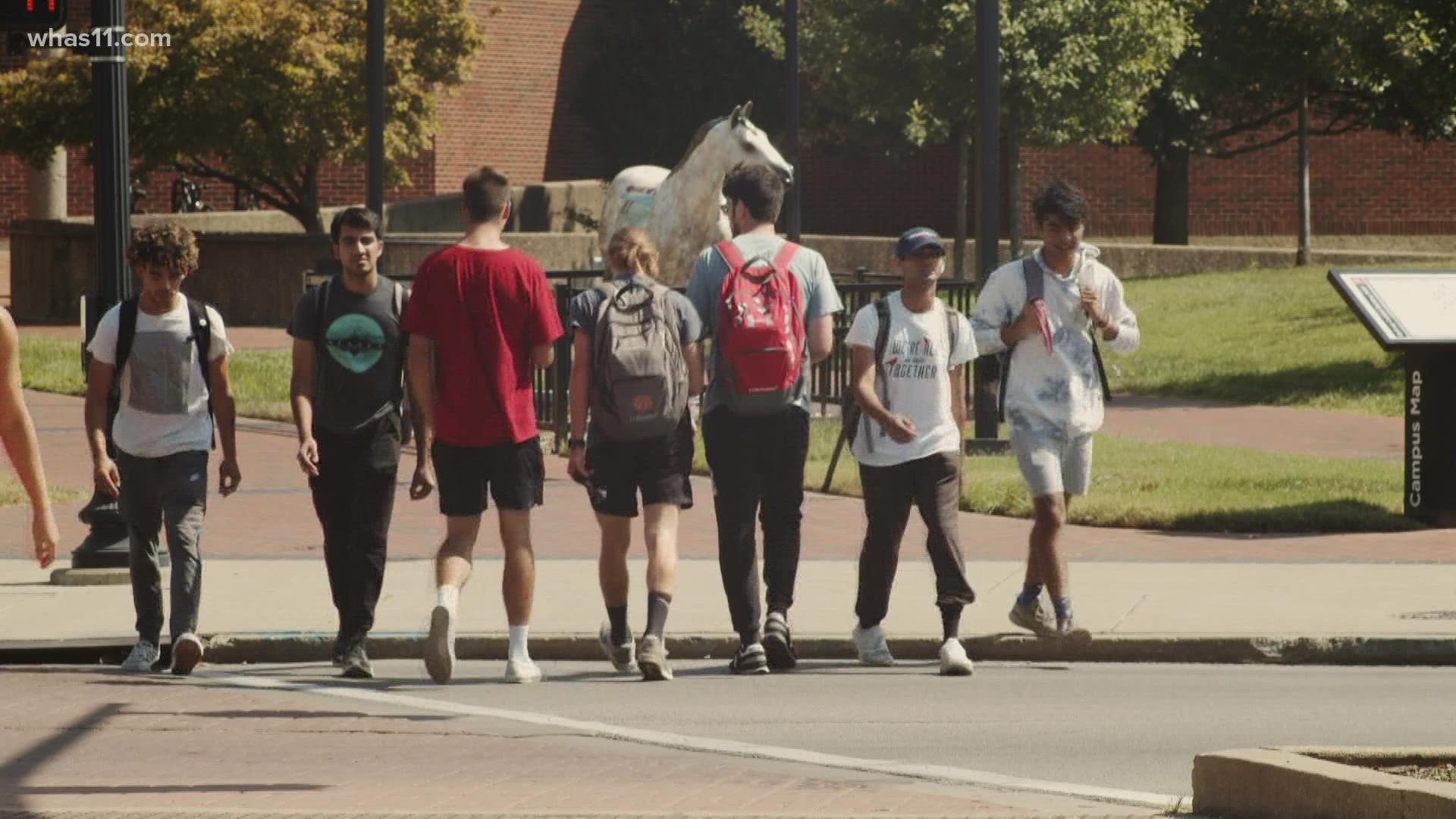LOUISVILLE, Ky. — An education is an investment. For many students that means investing four years of their lives lalong wirth tens of thousands of dollars.
In 2018, Mackenzie Boughey graduated from the University of Louisville with a Bachelor of Science in Business Economics.
“This is the biggest and most expensive piece of paper that I have in my house,” Boughey said.
While she didn’t say just how expensive it was, she admitted that for her it is valued in the tens of thousands of dollars. She said it is “worth every penny.”
For the last three years, Boughey has been paying back both federal and private loans with what she can afford. She said she is paying just under $900 a month.
“I’ve barely made a dent,” Boughey said.
So far, she has paid $17,550, but most of what she is paying isn’t going toward the amount she took out for school.
“Ten thousand dollars of that has solely been interest,” Boughey said. According to her, she’s paying about 6% on her federal loan and 10% on her private loans.
Current interest rates on federal student loans, direct and indirect, got much better in July, with a fixed rate of 3.73%. But students often take out private loans to cover leftover costs, which can be substantial. Those rates vary and are often hefty.
“It makes absolutely no sense that they tell you to take out a loan to pay for school so that you can get a job to pay back your loan. It's absolutely absurd,” Boughey said.
According to current data from the Federal Reserve, unpaid student loan totals have climbed year after year and have reached more than $1.7 trillion dollars in 2021. Increased tuition shares much of the blame.
“I don't know that the vast majority of students really know what they're getting into,” Dr. Michael Marshall, Bellarmine University enrollment vice president, said.
Today, tuition at Bellarmine University is about $44,500. For room and board, it’s another $9,000. But the school said it is helping students with costs.
All first-year students at Bellarmine receive aid, according to Marshall. The average package is between $35,000 and $38,000, and includes scholarships, grants, and student loans.
Like other schools, Bellarmine tries to come up with ways to defray the costs. One of them is what it calls the “public price promise" for incoming freshman who graduated with at least a 3.6 GPA. Marshall said students in this program won’t pay more than their state’s flagship tuition cost.
“Flagship institution is University of Kentucky, and so their cost is roughly about $26,000. So, tuition, fees, room and board, student with a 3.6 [GPA] coming to Bellarmine, they would pay no more than that,” Marshall said.
According to Bellarmine, 39% of its incoming class is enrolled in the program.
While the university touts access, affordability, and achievement, it recognizes most degrees come with debt. Marshall estimates Bellarmine students graduate with about $25,000 in debt, saying the national average is around $29,000.
“At some point there's going to be a level where people aren't going to be able to pay for it, or they just are going to refuse to pay for it,” Boughey said.
Boughey continues to make payments, but many other graduates are not.
Almost half of borrowers have federal loans in forbearance, meaning they’ve stopped payments, according to educationdata.org. Meanwhile, at any given time, an average of 15% of student loans are in default, equaling more than $124 billion.
“I'm very glad that I can say that I have a college education, but it has cost me a lot,” Boughey said.
►Have a story tip? Contact the FOCUS Investigative team at FOCUS@whas11.com

